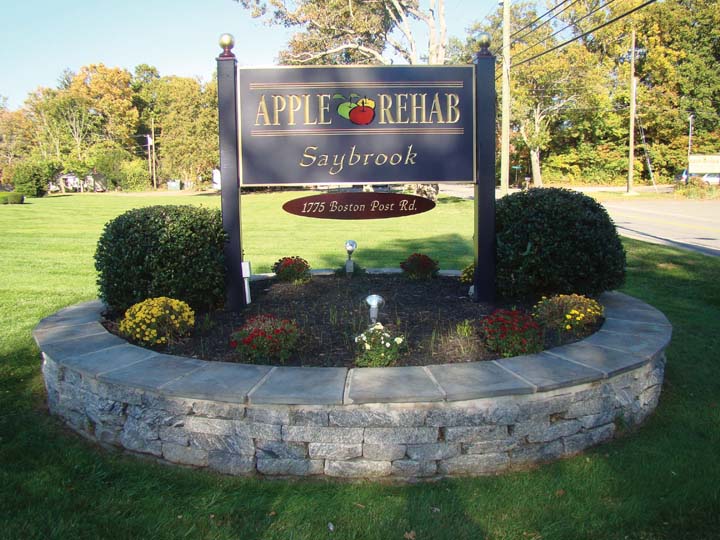Lorazepam Detox Treatment Charlton Depot MA
Home
Top Lorazepam Detox Treatment Charlton Depot MA Information
Lorazepam Detox Treatment Charlton Depot MA
They can vary in length, cost, and the therapy that is coupled with their program. Substance and alcohol abuse are just two of the most common addictions typically addressed in treatment facilities. At Weston Rehab, we have experience with gambling addictions, sex addictions, and more. Both drugs may be used as maintenance medications (taken for an indefinite period of time), or used as detoxification aids.[9] All available studies collected in the 2005 Australian National Evaluation of Pharmacotherapies for Opioid Dependence suggest that maintenance treatment is preferable,[9] with very high rates (79–100%)[9] of relapse within three months of detoxification from LAAM, buprenorphine, and methadone.[9][10] According to the National Institute on Drug Abuse (NIDA), patients stabilized on adequate, sustained doses of methadone or buprenorphine can keep their jobs, avoid crime and violence, and reduce their exposure to HIV and Hepatitis C by stopping or reducing injection drug use and drug-related high risk sexual behavior.
Whenever you face difficulties in overcoming drug addiction on your own, call Narcotics Anonymous hotlines and helplines 1-888-328-2518. You may ask yourself, “How does rehab work?” Like many things in life, long-term recovery is usually achieved with time and dedication.
Even more Details About Addiction Mental Illness

Even more Information About Dextrostat Rehab Treatment Centers Charlton Depot MA
The Place of Volition in Addiction: Differing Approaches and their Implications for Policy and Service Provision. Images & Illustrations of drug addiction Translations for drug addiction From our Multilingual Translation Dictionary narkomaniyaAzerbaijani наркаманіÑBelarusian наркоманиÑBulgarian drogoaddiccióCatalan, Valencian drogová závislost, narkomanieCzech DrogenabhängigkeitGerman drogodependenciaSpanish sõltuvus, narkomaaniaEstonian huumeriippuvuusFinnish toxicomanieFrench Õ©Õ´Ö€Õ¡Õ´Õ¸Õ¬Õ¸Ö‚Õ©ÕµÕ¸Ö‚Õ¶Armenian 薬物嗜癖Japanese ნáƒáƒ კáƒáƒ›áƒáƒœáƒ˜áƒGeorgian narkomanijaLithuanian narkomÄnijaLatvian наркоманијаMacedonian narkotikaavhengighet, narkomaniNorwegian narkomaniaPolish drogadiçãoPortuguese toxicomanieRomanian наркоманиÑRussian наркоманија, narkomanijaSerbo-Croatian drogová závislosÅ¥Slovak наркоманіÑUkrainian Get even more translations for drug addiction » Translation Find a translation for the drug addiction definition in other languages: Select another language: - Select -简体ä¸æ–‡ (Chinese - Simplified)ç¹é«”ä¸æ–‡ (Chinese - Traditional)Español (Spanish)日本語 (Japanese)Português (Portuguese)Deutsch (German)العربية (Arabic)Français (French)РуÑÑкий (Russian)ಕನà³à²¨à²¡ (Kannada)í•œêµì–´ (Korean)עברית (Hebrew)УкраїнÑький (Ukrainian)اردو (Urdu)Magyar (Hungarian)मानक हिनà¥à¤¦à¥€ (Hindi)Indonesia (Indonesian)Italiano (Italian)தமிழ௠(Tamil)Türkçe (Turkish)తెలà±à°—à± (Telugu)ภาษาไทย (Thai)Tiếng Việt (Vietnamese)ÄŒeÅ¡tina (Czech)Polski (Polish)Bahasa Indonesia (Indonesian)RomâneÈ™te (Romanian)Nederlands (Dutch)Ελληνικά (Greek)Latinum (Latin)Svenska (Swedish)Dansk (Danish)Suomi (Finnish)Ùارسی (Persian)ייִדיש (Yiddish)Norsk (Norwegian) Discuss these drug addiction definitions with the community: Word of the Day Would you like us to send you a FREE new word definition delivered to your inbox daily? Cognitive therapy[edit] An additional cognitively-based model of substance abuse recovery has been offered by Aaron Beck, the father of cognitive therapy and championed in his 1993 book Cognitive Therapy of Substance Abuse.[35] This therapy rests upon the assumption addicted individuals possess core beliefs, often not accessible to immediate consciousness (unless the patient is also depressed). One of the earliest warning signs of a developing problem is going through the medication at a faster-than-expected rate.
Below are Some Even more Resources on Dextrostat Rehab Treatment Centers
Prescription Drug Abuse Chart - The National Institute on Drug Abuse (NIDA) The 10 most dangerous drugs: Researchers at the University of Bristol, UK, used an evidence-based approach to assess the harm associated with drugs.[3] After considering the physical harm to the user, the drug's potential for addiction, and the impact on society of drug use, they came up with this list: Heroin Cocaine Barbiturates Street Methadone Alcohol Ketamine Benzodiazepines Amphetamine Tobacco Buprenorphine Commonly abused drugs: Amphetamines/Methamphetamine, Anorectic Drugs, Barbiturates, Benzodiazepines, Buprenorphine, Butorphanol, Cannabis, Chloral Hydrate, Cocaine, Codeine, Depressants, Dextroproxyphene, Fentanyl, Flunitrazepam (Rohypnol), Gamma Hydroxybutyrate (GHB), Glutethimide and Methaqualone, Hallucinogens, Hashish, Hashish Oil, Heroin, Hydrocodone, Hydromorphone (Dilaudid), Inhalants, Ketamine, Khat, LAAM, Lysergic Acid Diethylamide (LSD), Marijuana, MDMA (Ecstasy), Meperidine, Meprobamate, Methadone, Methcathinone, Methylphenidate (Ritalin), Morphine, Narcotics, Opium, Oxycodone, Pentazocine (Talwin), Paraldehyde (Paral), Peyote and Mescaline, Phencyclidine (PCP), Psiocybin and Psilocyne and other Tryptamines, Steroids, Stimulants, Thebaine References U. By working closely with clients to understand the underlying causes of addiction, a drug and alcohol treatment center can help clients heal by addressing the roots of substance use disorder.
Here are Some More Information on Addiction Mental Illness Charlton Depot MA
You eat and sleep at the clinic and may be recommended outpatient treatment for 6-12 months afterwards. Whatever the case, it’s important to include healing of the spirit in addiction recovery. For the most powerful and efficient treatment, Rehab in San Antonio evaluates how profound the addiction is, any contributing psychological factors (including co-occurring disorders), and what path to recovery will be the most effective for each individual client. Rehab in San Antonio Can Help Addiction is obviously an insidious, horrifying illness, as evidenced by the fact that people that suffer from dependency don’t only hurt themselves, but will hurt the people who they love. Speaking with an intervention provider and specialist can help you learn, at the least, that there is hope. This beachside community offers family therapy, individual treatment, dual-diagnosis treatment, and outpatient services. After your detox, your medical staff will help you get into a Christian rehab. In fact, teens are more likely to abuse prescription and over-the-counter drugs, including painkillers, stimulants, sedatives, and tranquilizers.
Click Here for More Information
Previous Next
You may also like:
Fioricet Rehab Treatment Programs Barling AR
Methylphenidate Addiction Treatment Clinic Molena GA
Detox From Cocaine Pledger TX
Kapanol Detox Sterling OK
Vivitrol Detox National City MI
Kadian Abuse Treatment Programs Barclay MD
Biphetamine Addiction Detox Centers Stoutland MO
Oxycodone Detox Treatment Facilities Banner Elk NC
Oramorph Addiction Rehab Clinic Henagar AL
Dextropropoxyphene Addiction Rehab Capac MI
Dual Diagnosis Anonymous Blooming Grove TX
Hycomine Abuse Center Glen White WV
Methadrine Abuse Treatment Program Crawford MS
Adderall Addiction Detox Center Tierra Amarilla NM
Vicodin Addiction Treatment Clinics Simonton TX
Oxycontin Abuse Treatment Hopewell OH
Endodan Detox Treatment Clinics Vincent KY
Biocodone Detox Treatment Programs Plainview MN
Crack Cocaine Abuse Clinics Picatinny Arsenal NJ
Butorphanol Rehab Centers Meriden CT